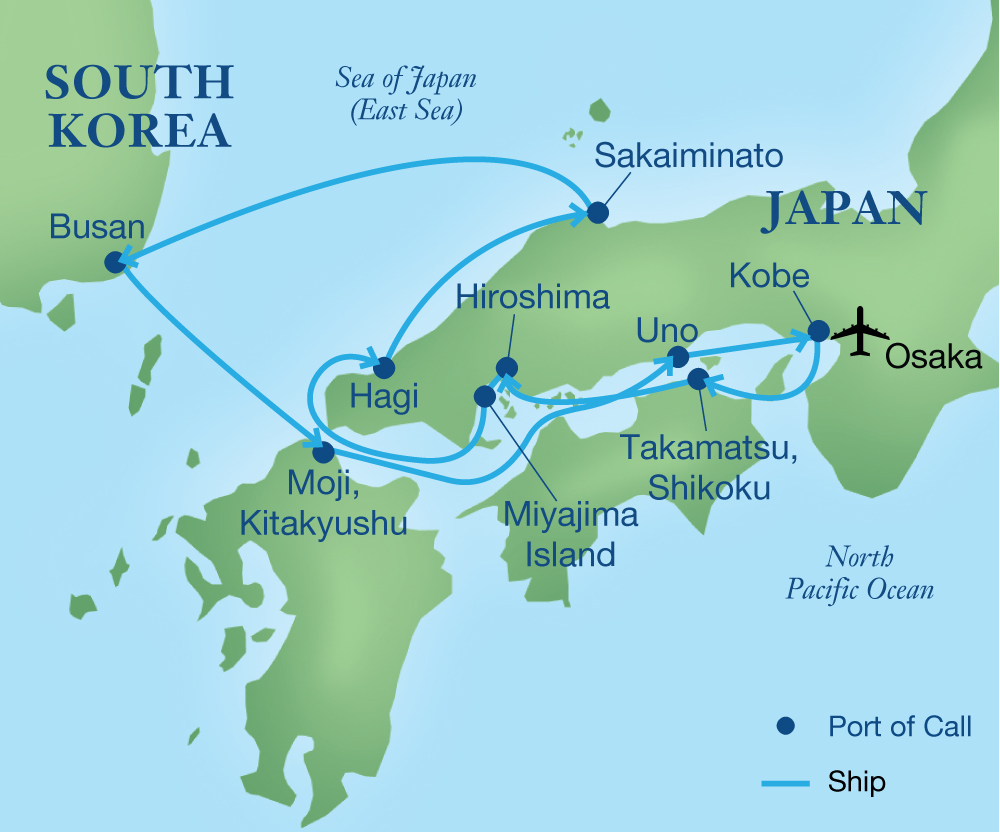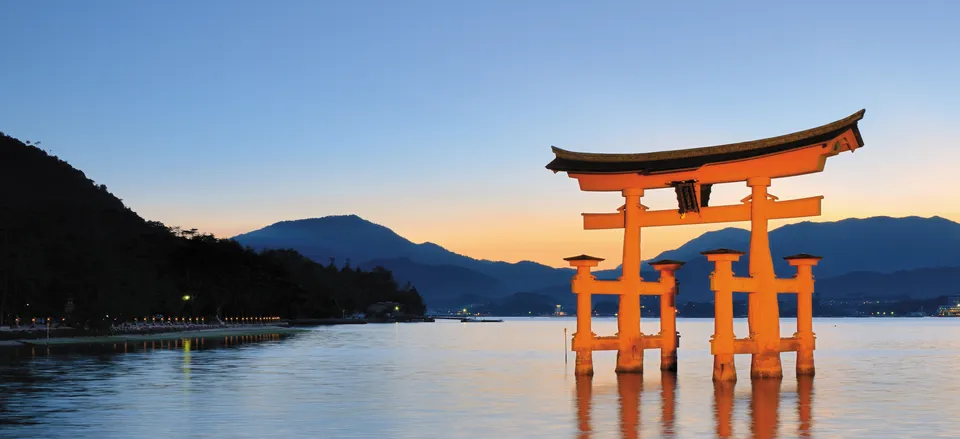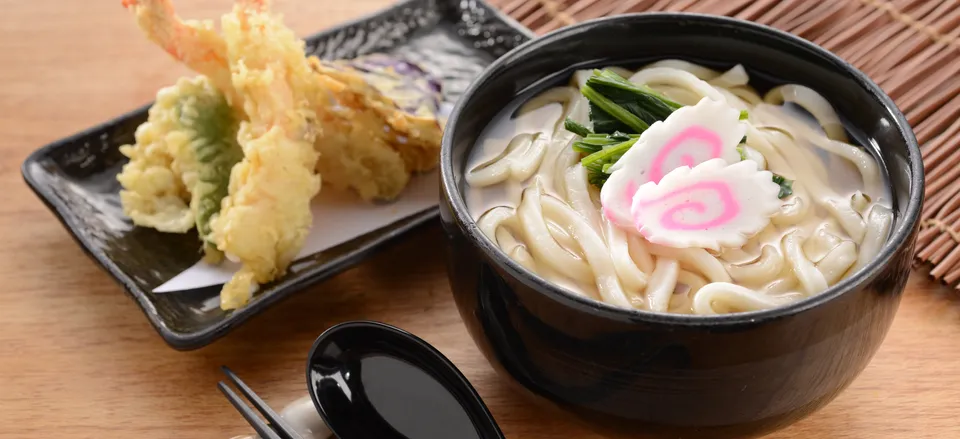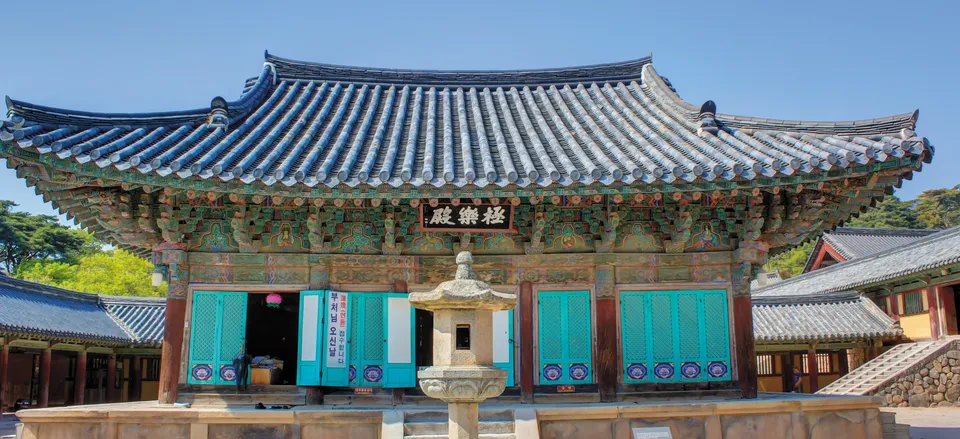A NEW cruise offering from Smithsonian Journeys and PONANT
Trace the coast of Honshu, exploring lesser-known towns and villages that harbor the hallmarks of Japan’s rich culture: from traditional crafts and Japanese gardens to historic castles and shrines.
Treasures of Japan by Sea
Aboard the 264-guest Le Soléal
9 days from $9,008
A NEW cruise offering from Smithsonian Journeys and PONANT
Trace the coast of Honshu, exploring lesser-known towns and villages that harbor the hallmarks of Japan’s rich culture: from traditional crafts and Japanese gardens to historic castles and shrines.
Overview

Sail the coast of Honshu from Osaka Bay to the Sea of Japan, discovering historic towns and cities that harbor a wealth of Japanese art, handicrafts, gardens, and shrines. Catch the sunset on the iconic 'floating' torii gate on Miyajima Island, and spend time at the poignant Hiroshima Peace Park and Memorial. Cross to South Korea for a day among the temples and markets of Busan or a visit to the ancient Silla capital of Gyeongju, a World Heritage site. Tour world-renowned art museums and some of the best classical gardens in Japan, and visit artisans in their workshops to learn how timeless crafts are made.
The Smithsonian Journeys / PONANT Experience: Each cruise will be accompanied by two Smithsonian Journeys Experts. An excursion or activity is included in each port of call. You may have a choice of excursions in many ports, so that you can delve more deeply into subjects that interest you.
Highlights Include
- Takamatsu: See traditional Japanese architecture at the open-air museum of Shikokumura and admire some of the most stunning bonsai in Japan.
- Hiroshima and Miyajima Island: Hear moving stories of survival and resilience on a visit to the Peace Memorial Park in Hiroshima and see Itsukushima Shrine and its iconic torii gate on Miyajima Island.
- Japanese Gardens: Visit three remarkable traditional Japanese gardens—Korakuen, Ritsurin, and Yushien—and discover how the spiritual and the natural are woven together in Japanese landscaping.
- Hagi: Delve into the history of the Edo period and the Meiji Restoration in this castle town, visiting merchant houses and samurai districts and learning about traditional crafts practiced here over the centuries.
- Matsue and Yasugi: Admire a phenomenal collection of Japanese modern art and stunning gardens at the Adachi Museum of Art. Explore Matsue Castle and witness the Japanese art of papermaking known as washi; or surround yourself with blossoms at the Tottori Hanakairo Flower Park.
- South Korea: Spend a day in the port city of Busan, exploring the Busan Museum of Art, the lively fish market, historic temples, and more. Or travel to World Heritage-listed Gyeongju to see the glorious sites of the cradle of the eighth-century Silla Kingdom.
- Traditional Cuisine: Try your hand at making—and eating—traditional Japanese udon noodles, and a chance to sample sake in a traditional sake-making village.
- 2024 departure: "Cultural and Natural Treasures of Japan by Sea" follows a different itinerary - see website for details.
To see itinerary, please click on an option below.
Itinerary
Day 1 — Osaka, Japan/Kobe
Arrive into Osaka airport and transfer to the port at nearby Kobe. Embark the ship late this afternoon. Set sail on the Seto Inland Sea, the waterway that separates the islands of Honshu and Shikoku. (D)
Day 2 — Takamatsu
A vibrant port city on the island of Shikoku, Takamatsu was once the fortified stronghold of the Matsudaira clan. It is home to Ritsurin Garden, one of the most beautiful classic gardens in Japan. Created by feudal lords at the start of the Edo period, the garden uses the shakkei technique, which draws in the surrounding landscapes. On a morning visit, discover koi ponds, graceful bridges and pavilions, and ancient trees; and stop for tea while enjoying the views. Then explore the Shikokumura, an open-air museum that includes 27 traditional structures—including a kabuki theater and artisan workshops—recreating life on Shikoku in an earlier era. You’ll have the choice to return to the ship after lunch or continue to the Nakano Udon School for a lesson in making udon, the noodles for which this region is famous. End the day at Kandaka Shojuen bonsai garden, examining a collection of bonsai masterpieces. (B,L,D)
Day 3 — Hiroshima and Miyajima Island
Spend the morning in Hiroshima, a city that embodies resilience and healing. Take a walk through the Peace Memorial Park, a World Heritage site, and see the Genbaku Dome, the only structure to survive the explosion of the atomic bomb. Visit the Peace Memorial Museum and, at the Children’s Peace Monument, learn the moving story of the young survivor who inspired a national movement. Then ascend the Hiroshima Orizuru Tower for sweeping views. Alternatively, head to the Saijo district, the heart of the sake industry since the turn of the 20th century. Take a walking tour of Sakagura-dori, or Sake Brewery Street, and visit two breweries for a tour and tasting. Stop to see Hiroshima Castle before returning to the ship. On Miyajima Island, tour the World Heritage-listed Itsukushima Shrine. The Shinto shrine was originally established in 593, and is guarded by a vermillion torii gate that seems to float on the water at high tide. Enjoy free time on the island this afternoon and watch this stunning shrine light up at sunset. (B,L,D)
Day 4 — Hagi
Round the southern coast of Honshu and enter the Sea of Japan on our way to Hagi. Once the seat of the powerful Môri clan during Japan's Edo Period, Hagi was active in the Meiji Restoration, which returned the country to imperial rule. Visit the 17th-century Toko-ji temple and see its 500 moss-covered stone lanterns honoring the Môri clan lords. Stop by a Hagiyaki pottery workshop to learn about the city’s signature tea ware. Then take a walking tour of Hagi Castle Town, where original roads and samurai dwellings of have survived intact. Examine everyday ceramics, utensils, and clothing on a visit to the Kikuya Residence, one of the best-preserved examples of merchant-style architecture from the Edo Period. Alternatively, focus on the city’s World Heritage sites, which recognize the role Hagi played in Japan’s rapid 19th-century industrialization. You’ll visit the Reverberatory Furnace and Shoukasonjuku Academy, as well as Hagi Castle Town. (B,L,D)
Day 5 — Matsue and Yasugi
Go ashore in Sakaiminato and explore the region on one of three excursions. Visit the exquisite Adachi Museum of Art, set amid Japanese gardens considered some of the most beautiful in the country and home to a world-class collection of Japanese modern art. Witness the evolution of artistic styles from the Meiji Period through the 20th century, and admire works by prominent artists such as Yokoyama Taikan. Continue to Daikonshima Island, in the middle of Lake Nakaumi, for a visit to Yushien Garden, known for its abundance of blooming peonies in the spring.
Or choose to travel to Matsue Castle, built in 1611 and one of the few original castles that remain in Japan. See a collection of samurai swords and armor and take in sweeping views from the donjon. Then delve into the art of Japanese papermaking, or washi. Visit a museum dedicated to a master craftsman and try your hand at this ancient art, now recognized as UNESCO intangible cultural heritage.
Alternatively, surround yourself with brilliant blossoms at the Tottori Hanakairo Flower Park, where fields of seasonal flowers encircle a domed greenhouse full of tropical flora. Then visit Kotobuki-jo, or “Sweets Castle,” a replica of a historic castle, that offers beautiful views—and traditional Japanese candies. On your return to the ship, see the bronze statues of manga characters that line Mizuki Shigeru Road. This afternoon, set sail for the Korean Peninsula. (B,L,D)
Day 6 — Busan, South Korea
Arrive in the port city of Busan, a former colony of Japan that is now South Korea’s second-largest city. Take in the view from Gwangan Grand Bridge, Korea’s longest suspension bridge, on your way to Haedong Yonggungsa Temple, a colorful temple originally built in the 14th century that sits picturesquely atop seaside rocks. Return to Busan to visit the Busan Museum of Arts and sculpture garden, or head to the Jagalchi Fish Market for a glimpse into everyday life in Busan. Alternatively, travel to Hongbeopsa Temple, home to the largest Buddha statue in Asia. Or choose a full-day excursion to the historic city of Gyeongju, cradle of the Silla Kingdom (57 BC to AD 935), and its glorious World Heritage-designated Bulguksa Temple. Continue to the royal burial mounds at Tumuli Park and venture into the fifth-century Cheonmachong, or “Flying Horse” tomb. Our final stop is the Gyeongju National Museum, which houses a treasure trove of Silla artifacts. (B,L,D)
Day 7 — Moji, Kitakyushu
Navigate the narrow Kanmon Straits, which separate the islands of Honshu and Kyushu. Perched on this active waterway is picturesque Mojiko, a flourishing center of commerce until 1945. Choose one of two excursions today. Travel to the samurai stronghold of Chofu, the center of the uprising against Tokugawa rule that led to the Meiji Restoration in 1868. Take a walking tour of this virtual museum of samurai history and culture, visiting the elegant Chofu Mori residence and the Kozan-ji temple, the oldest Zen temple in Japan; then see the beautiful Akama Shrine. Or explore 17th-century Kokura Castle and its authentic teahouse and stylized gardens. On your return, stop in Mojiko Retro, a trendy area of repurposed buildings in the old port. Take in the view from a high-rise designed by one of Japan’s leading architects, and enjoy time to meander through this district on your own. (B,L,D)
Day 8 —Fukiya Furusato Village or Kurashiki
Dock in Uno, and head into the mountains of western Okayama to the Fukiya Furusato Village, the center of production of a precious ore called bengara. The discovery in 1707 of this iron oxide—the primary pigment in the red ochre paint that colors the houses of Fukiya—transformed a once sleepy copper-mining village into a prosperous town. Stop on the way to tour the grounds of the Hirokane-tei, a stunning Edo-period residence. Visit the Bengara Museum and the 18th-century Former Katayama Residence. After lunch, enjoy free time to stroll through this red-hued village. Alternatively, spend today in the Kurashiki Bikan Historical Area, where 18th-century storehouses recall the area’s heyday as a commerce hub during the Edo period. Stop in at the Museum of Folk Craft to see an impressive collection of centuries-old household goods that provides an intriguing look into everyday life during the Edo period. Continue to the Ohashi Family House, the 200-year-old home of a wealthy merchant. Following lunch, enjoy an afternoon at Korakuen Garden, considered one of the three great gardens of Japan. (B,L,D)
Day 9 — Kobe
Disembark in Kobe after an early breakfast and extend your stay or transfer to the airport in Osaka for your flight home. (B)
Included meals are denoted as follows: Breakfast (B), Lunch (L), Reception (R), Dinner (D)


/https://tf-cmsv2-journeys-media.s3.amazonaws.com/filer_public/03/e4/03e429ee-4722-4553-9fbe-19246ef93834/jpn_ritsurin_garden_dt_59548968.jpg)
/https://tf-cmsv2-journeys-media.s3.amazonaws.com/filer_public/7b/d2/7bd26a94-d9a1-445f-a945-49db0bb0edfb/jpn_teaceremony_ist_544590230.jpg)
/https://tf-cmsv2-journeys-media.s3.amazonaws.com/filer_public/74/5a/745a64af-1f7a-4a9d-8b8c-3e95b1e218bf/jpn_goldleafworkshop_ist_1129177741.jpg)

/https://tf-cmsv2-journeys-media.s3.amazonaws.com/filer_public/5d/41/5d415955-1e46-4a39-b5c5-6963b29880c1/jpn_matsuecastle_dt_l_118705989.jpg)
/https://tf-cmsv2-journeys-media.s3.amazonaws.com/filer_public/ff/4b/ff4b9a77-8076-46a4-8bbb-593655e3cc25/kor_seoul_gyeongbokgung_palace_ist-509661920.jpg)

/https://tf-cmsv2-journeys-media.s3.amazonaws.com/filer_public/cb/87/cb876422-b6c3-45dc-98c2-56a7a66da94d/skr_gyeongju_temple_ss_1114897469.jpg)
/https://tf-cmsv2-journeys-media.s3.amazonaws.com/filer/cc/94/cc9461b0-e696-4b73-8ead-90dfe60a2848/family_jpn_dinner_ist_000020604142_full.jpg)
:focal(1831x1255:1832x1256)/https://tf-cmsv2-journeys-media.s3.amazonaws.com/filer/92/7d/927d3e61-c78e-4ea2-8136-be7ae18c75a6/jpn_kyoto_monk_chijon-jibuddhistshrine_ist_638800102.jpg)
:focal(3575x1752:3576x1753)/https://tf-cmsv2-journeys-media.s3.amazonaws.com/filer_public/99/3f/993f7b34-eda6-48ec-9dd5-b7b918c8cf6c/jpn_matsuecastle_ss_1100296799.jpg)